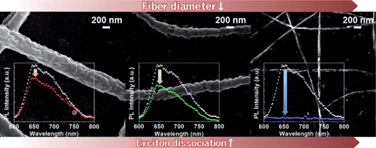Preparation and photoluminescence (PL) performance of a nanoweb of P3HT nanofibers with diameters below 100 nm
Abstract
One-dimensional

- This article is part of the themed collection: Materials Chemistry of Nanofabrication
* Corresponding authors
a
Carbon Nanomaterials Design Laboratory, Global Research Laboratory (GRL), Research Institute of Advanced Materials (RIAM), and Department of Materials Science and Engineering, Seoul National University, Seoul, Republic of Korea
E-mail:
crpark@snu.ac.kr
Fax: (+82) 2-885-1748
Tel: (+82) 2-880-8030
One-dimensional

 Please wait while we load your content...
Something went wrong. Try again?
Please wait while we load your content...
Something went wrong. Try again?
T. Kim, J. H. Im, H. S. Choi, S. J. Yang, S. W. Kim and C. R. Park, J. Mater. Chem., 2011, 21, 14231 DOI: 10.1039/C1JM10396B
To request permission to reproduce material from this article, please go to the Copyright Clearance Center request page.
If you are an author contributing to an RSC publication, you do not need to request permission provided correct acknowledgement is given.
If you are the author of this article, you do not need to request permission to reproduce figures and diagrams provided correct acknowledgement is given. If you want to reproduce the whole article in a third-party publication (excluding your thesis/dissertation for which permission is not required) please go to the Copyright Clearance Center request page.
Read more about how to correctly acknowledge RSC content.
 Fetching data from CrossRef.
Fetching data from CrossRef.
This may take some time to load.
Loading related content
